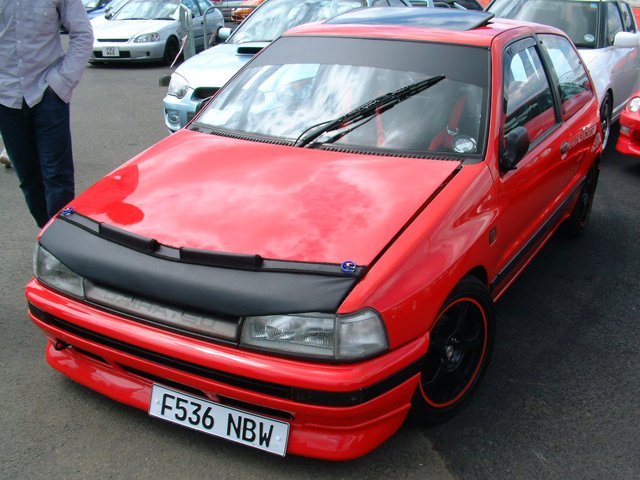The thing you need to know about the Daihatsu Charade is that they called it the Charade, a name which even the dictionary connects to absurdity. The name didn't sound so terrible to the Japanese, and this highlights the big problem with the car in exports markets, it is very much a Japanese domestic car. There have been some JDM cars which we would have loved to have gotten in the US, but there are also a lot of underpowered city cars. This is one of those.


Daihatsu is now a Toyota brand, but the company was originally founded in 1907 under the name Hatsudoki Seizo Co. and it is actually Japan's oldest automaker. The name was changed to Daihatsu in 1951, and there followed a period of growth where it would eventually move into marine engines and generators as well. It would first partner up with Toyota in 1967 in order to gain access to the company's much bigger dealer network, especially overseas. This deal would stay in place for quite a while, but Toyota would finally gain a controlling share of the company in 1999, a few years after Daihatsu's failed attempt to break into the US market. The Charade began life in 1977, and took much of the Japanese auto industry by surprise. The car was a small hatchback with a 1.0-liter three-cylinder engine, and with new emissions regulations coming in, it was believed that this market segment was already overcrowded. But the Charade was a hit, and was even named Japanese car of the year for 1979. The car was also an instant hit in Latin America, and in Chile especially. The car had the advantage of being able to run on very low-octane fuel, something which is unfortunately quite common in Latin America.

It had some success in Europe early on as well, with Greece becoming a big market, and production of a Greek market-specific version being set up locally. The Charade would become a much more serious vehicle in 1983 with the introduction of the second generation. A turbo version raised horsepower from 50 to 68, but even the naturally-aspirated version was able to get the lightweight supermini to 60mph in the 12 second range, which was perfectly respectable for 1983. Australian crash tests rated this generation as "significantly worse than average" in terms of safety, but this didn't really put much of a damper on the model's momentum.
Daihatsu worked with Alejandro de Tomaso to make a WRC version of the car, which competed briefly in Group B rallying before the class was ended. This was a big step forward for the car, and on the strength of this, Daihatsu decided to bring it to the US market in 1988, just after the debut of the third generation. With the third generation, there was a 105-horsepower GTi version, but as you might have guessed, we didn't get that in the US. Just as the Geo Metro was a stripped-down and horrible version of an otherwise decent Suzuki model, only the crap versions of this competing vehicle made it over to the US.


It was generally agreed that they were well-built cars, and Daihatsu used to make the claim it was like a Geo Metro with "BMW-like quality". But build quality was never the problem with the Metro, the problem was its relentless drive towards cheapness, and Geo managed to sell a significant number of them anyway. There just wasn't any reason to buy this more expensive model with no practical advantage and an unfortunate name. Daihatsu would withdraw permanently from the US market after just a few years, in 1992. The Charade would be killed off in 2000, shortly after the Toyota takeover.
Following this, the brand was pulled out of the Australian market, and plans have been announced to pull out of Europe as well, which will happen sometime this year. Daihatsu is now essentially in the process of becoming a cheaper brand for emerging markets, a role which it maybe should have stuck to in the first place.


Related News



